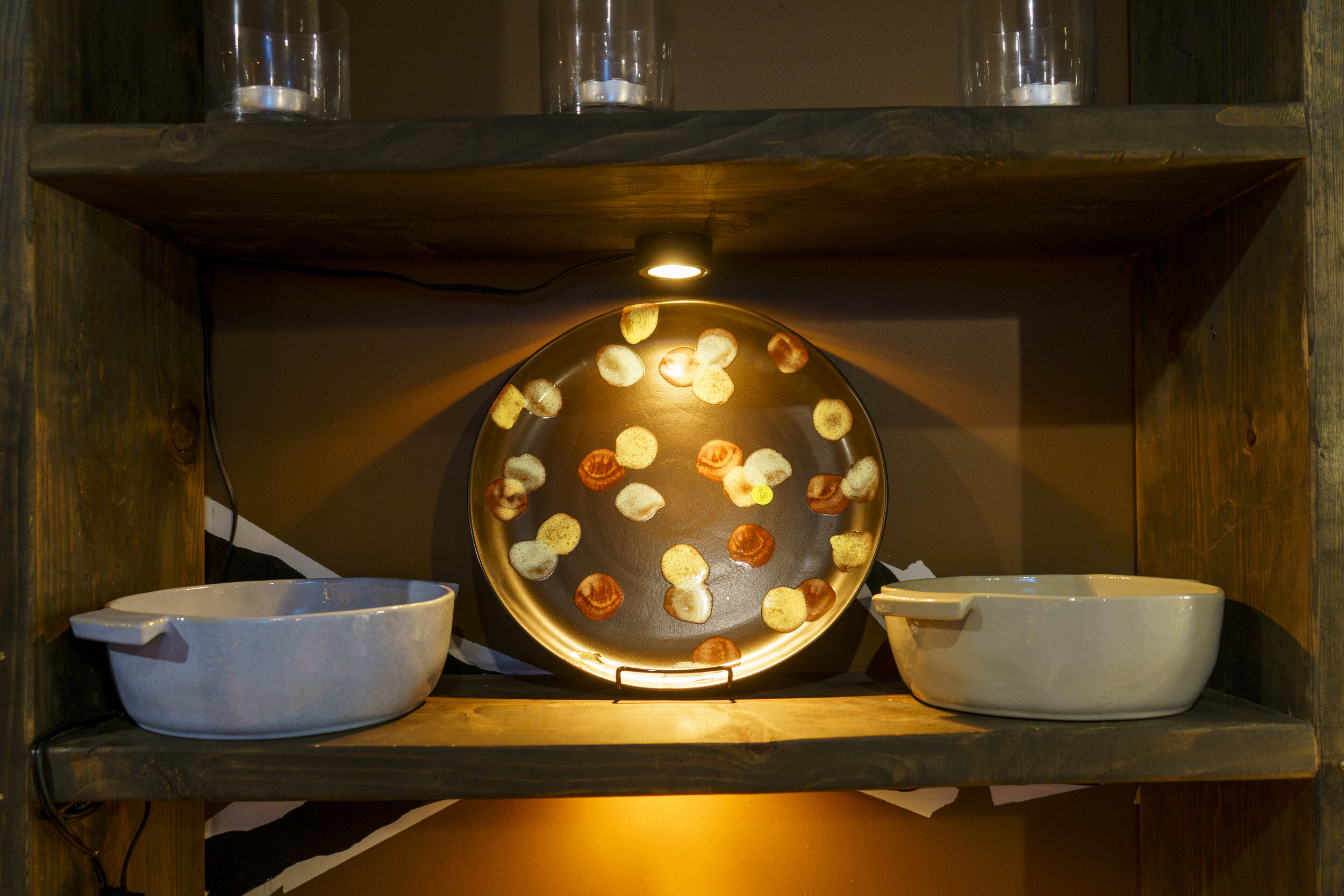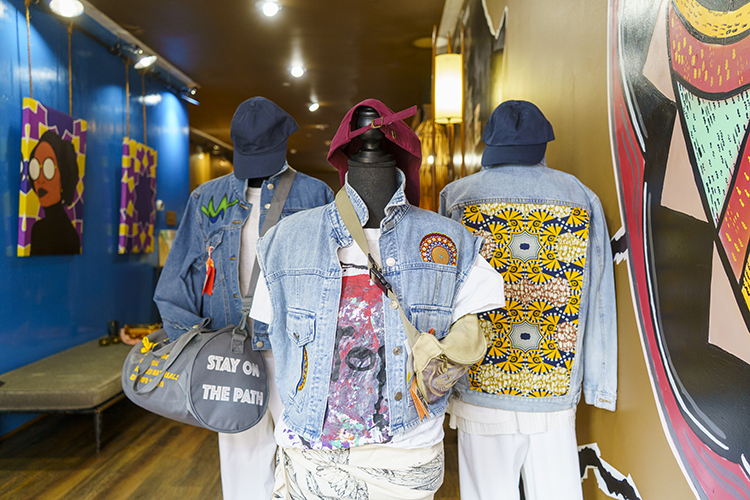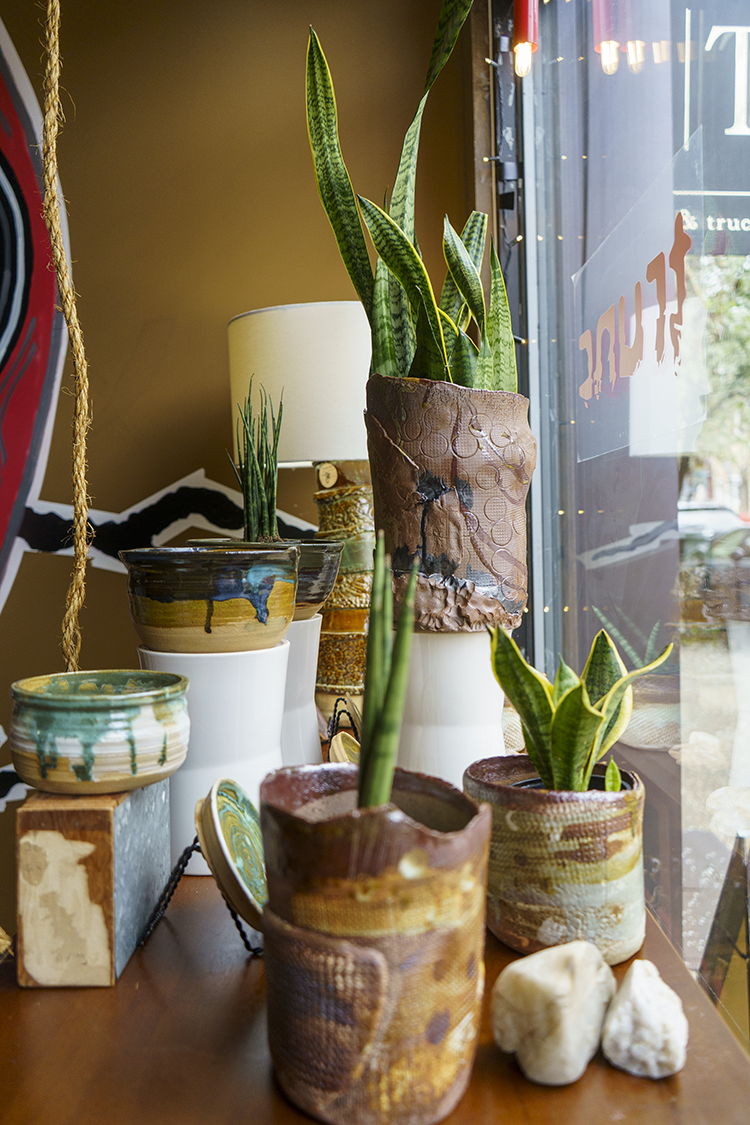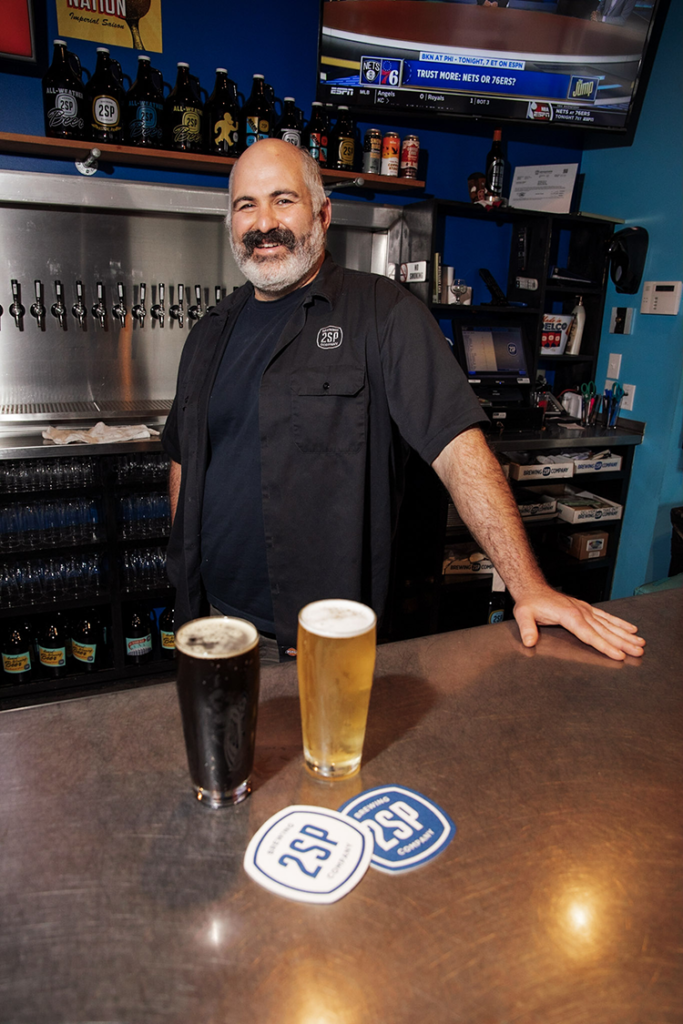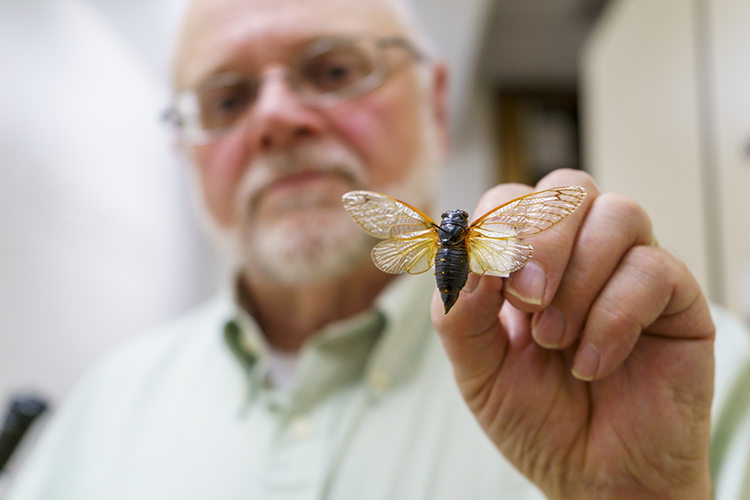There’s a better place than the fridge for children’s art.
Dorothea Gamble and Dagmar Mitchell of the Northern Liberties art boutique Trunc feel strongly about this—and are actively looking for young artists.
“We want to get children in the shop,” says Gamble. She and her partner, Mitchell, both 65, pride themselves on selling art, furniture, clothing and jewelry that “has a story.” And they know where every story begins.
“Every artist or artisan was a child first,” Gamble explains. “Most practiced their skill every chance they got. Most don’t realize their passion until later in life, and some don’t realize they can make a living with their craft.”
This was certainly the case with some of their current artisans. Kate Cappelletti of Indy Stone, for one, worked in the corporate beauty world for nearly a decade before coming to terms with the fact that creating was her true passion. She is now a full-time artist, selling wooden trays and dishes adorned with pressed flowers.
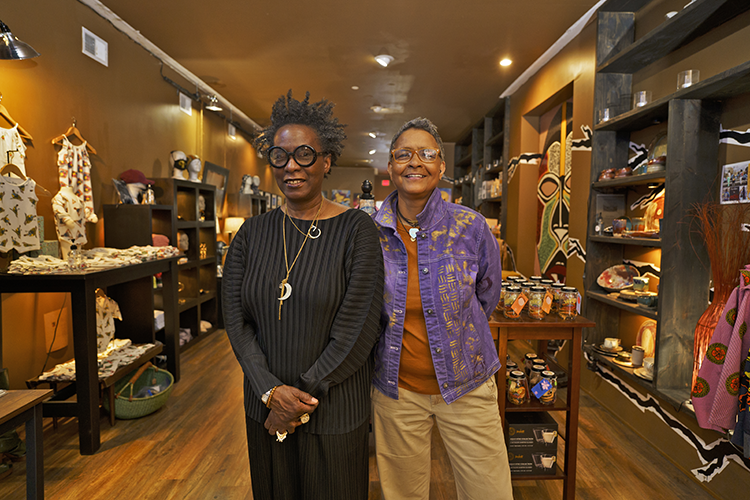
“Since I was very young, I have always loved thinking of something in my head and watching it come out through my hands,” Cappelletti says. The Philadelphia-based artist has noticed that Gamble and Mitchell take a lot of care with how they display and discuss artists’ work.
“They really understand where the artist is coming from and how they do what they do. I’ve talked to a lot of different small business owners and not everyone has that same enthusiasm for the story behind the art,” Cappelletti says.
No surprise, the shop owners’ professional backgrounds are artistic as well.
Mitchell, a veteran, opened up two flower shops following her military service. She is now a full-time drug-and-alcohol-addiction therapist. Gamble, who runs the day-to-day operations at Trunc, spent more than three decades in executive retail management in various clothing, interior design and restaurant businesses.
The couple opened their store at 929 N. Second Street in 2018, almost 20 years after buying the building. They had purchased the property for $40,000 about a year into their relationship, in 1999, with the goal of opening a business. But the path wasn’t straightforward.
“The journey was a bit challenging,” Gamble says.
They were drawn into a legal battle in 2005, when the property was taken from them via adverse possession, aka squatter’s rights. When they regained rights to the building in 2012, they had trouble finding loans to renovate. Eventually they were able to renovate the storefront, along with three condominiums above the store, and opened in October 2018.
“That’s where the name ‘Trunc’ came from,” Mitchell says of the journey. “Because the trunk is strong and sturdy and you have to really cut them out in order to get rid of them.”
Since 2018, they’ve doubled the number of artisans they work with to 25. They juggle a mix of wholesale and consignment partnerships, and everything they sell is handmade and functional.
Gamble, who has been drawing since she was young, says the shop was inspired by a record store in her hometown as well as by a museum gift shop where she had
previously worked.
Most of the shop’s artists they’ve met by happenstance, Gamble explains, sometimes when they’ve just come into the shop to look around.
“You can tell a person that has an artistic background by the way they look at the merchandise and [for] how long they look…” Gamble says.
This happened with Johanna Roebas, of Roebas Ceramics, who came into the shop and ended up chatting with Gamble. During their talk, she mentioned that she sometimes works with clay.
”In a moment of big self confidence, I asked, did she want to carry any of my ceramics?” Roebas laughs.
Roebas has been an artist since childhood, doing ceramics on-and-off since she was 11 years old. As a full-time graphic designer bound by structure at her day job, she has found freedom in making pottery.
“When I sit down with a wheel, I set an intention but then let the piece do what it wants,” Roebas says. She describes the process as a conversation between herself and the clay. She’ll know a certain form she wants to throw but works through the ultimate shape of the piece in the moment.
“I can just follow my impulses and see what happens,” the artist says, noting she has had success selling her wares at Trunc.
Previously, Roebas had her pieces in three other locations and never sold one piece, Gamble says. “And when she got to Trunc, she’s doing phenomenally well,” says Mitchell.
Roebas attributes this to Gamble’s talent as a spokesperson.
“Dorothea is my voice and my space,” Roebas says. “She can speak to what the pieces look like and what they can be used for, and I don’t have to worry about the business end of it.”
Gamble says she can tell customers looking at Roebas’s work exactly how it came to be.
“I can tell them that she does it on a wheel and she does a lot of the structure by hand and she glazed it herself because she has a unique glazing technique,” Gamble says.
Gamble’s experience in retail and Mitchell’s in business also come in handy. “We really like to bring the artists and teach them how to price their merchandise,” Gamble says.
Cappelletti finds this helpful.
“I’m not an expert in every field required to be a successful artist. I’m not an accountant, a marketing specialist, not a salesperson, but I have to wear all of those hats if I want anyone to see my art,” Cappelletti says. “What they’re doing is they take some of those responsibilities off the shoulders of the artists, and really give us the time and space we need to focus on creating.”
Mitchell adds that Trunc is all about giving local artisans community support.
“A lot of the artisans we work with—we call them the invisible artists. They do a fabulous job. They do some beautiful art, but nobody really picks them up, or ever sees their artwork, or it’s on a very small basis. They’re not the people that you’re going to find in the Art Museum or at The Barnes, or any big time museum. We give them a platform to start somewhere,” Mitchell says.
The store has made certain adjustments in the last year due to COVID-19, including starting a website and offering curbside pickup. They also fortified the 1,200-square foot space with hand sanitizer on every table, to make customers more comfortable during the pandemic.
Moving forward, Gamble says she hopes to make Trunc’s packaging more sustainable, continue to prioritize female artists and get their children-artist initiative off the ground.
“We want to do the same thing we’re doing with adults, with children,” Mitchell says.
“So many schools have no art program or a very limited one,” Gamble adds. “We want to support the next generation of artists and artisans. What better way than to show and sell their work in our shop? We are positive it will give them confidence, build their self-esteem, boost their creative juices and teach them that creativity is a valuable tool.”
The weekend of June 20, they will be hosting their first child artist, alongside his father, in a Father’s Day gallery showing, curated by Nile Overton.
The pair of painters go by Gahdsaid Sr. and Gahdsaid Jr. The younger Gahdsaid will turn 3 years old this October, Gamble says, but he’s already displayed strong talent.
“I’ve seen his work,” Gamble says. “Like father, like son.”



